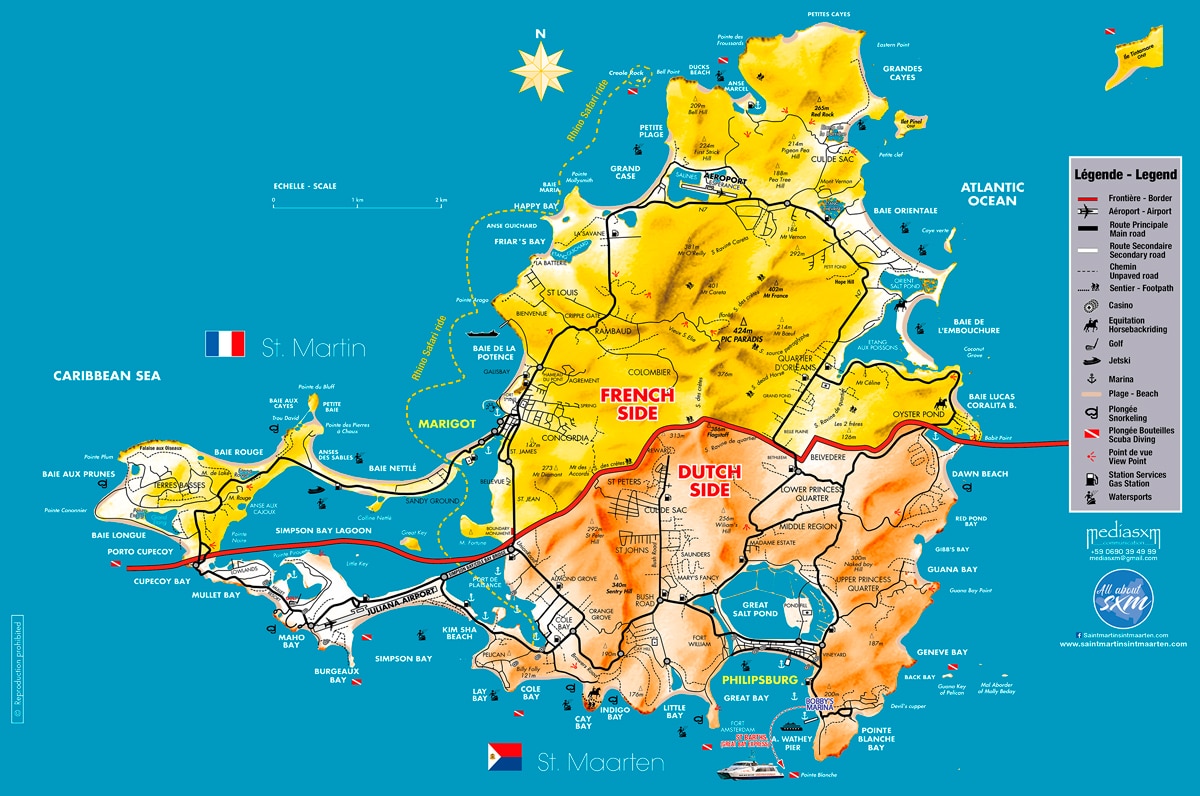
Saint-Martin, various Geography and Cultural Jewel in the Heart of the Caribbean
Saint-Martin is a gem in the heart of the Antilles Archipelago, a small but captivating island located in the Northern Hemisphere, nestled between the Tropic of Cancer and the Equator. Its precise location is in the northern part of the Lesser Antilles, a chain of islands formed by the dynamic movements of the Earth’s crust. Millions of years ago, the Atlantic Plate slowly slid beneath the Caribbean Plate, resulting in volcanic activity that gave birth to this string of islands, including Saint-Martin.
Saint-Martin’s geography and its coordinates place it in a strategic location within the Caribbean region. To its southeast, approximately 240 kilometers away, lies the island of Guadeloupe, another key member of the Lesser Antilles. St. Martin is uniquely positioned, with its eastern shores facing the vast Atlantic Ocean and its western coast bathed by the gentle waters of the Caribbean Sea. This dual exposure to two different bodies of water contributes to the island’s rich and varied marine life and its appeal as a destination for water-based activities.
Covering a total area of 88 square kilometers, St. Martin is relatively small but packed with diverse landscapes. The island stretches 15 kilometers in length and 13 kilometers in width at its longest and widest points. Despite its compact size, the island’s geography is remarkably diverse, with a mix of rolling hills, rugged mountains, and pristine beaches that cater to various outdoor activities.
Central Geography
The central geographical position of Saint-Martin places it midway between Puerto Rico to the west and Guadeloupe to the south, firmly anchoring it within the heart of the Caribbean Sea. This location also makes St. Martin the closest French territory to the United States, an interesting fact that adds to its unique identity as a part of France with strong ties to the Americas.
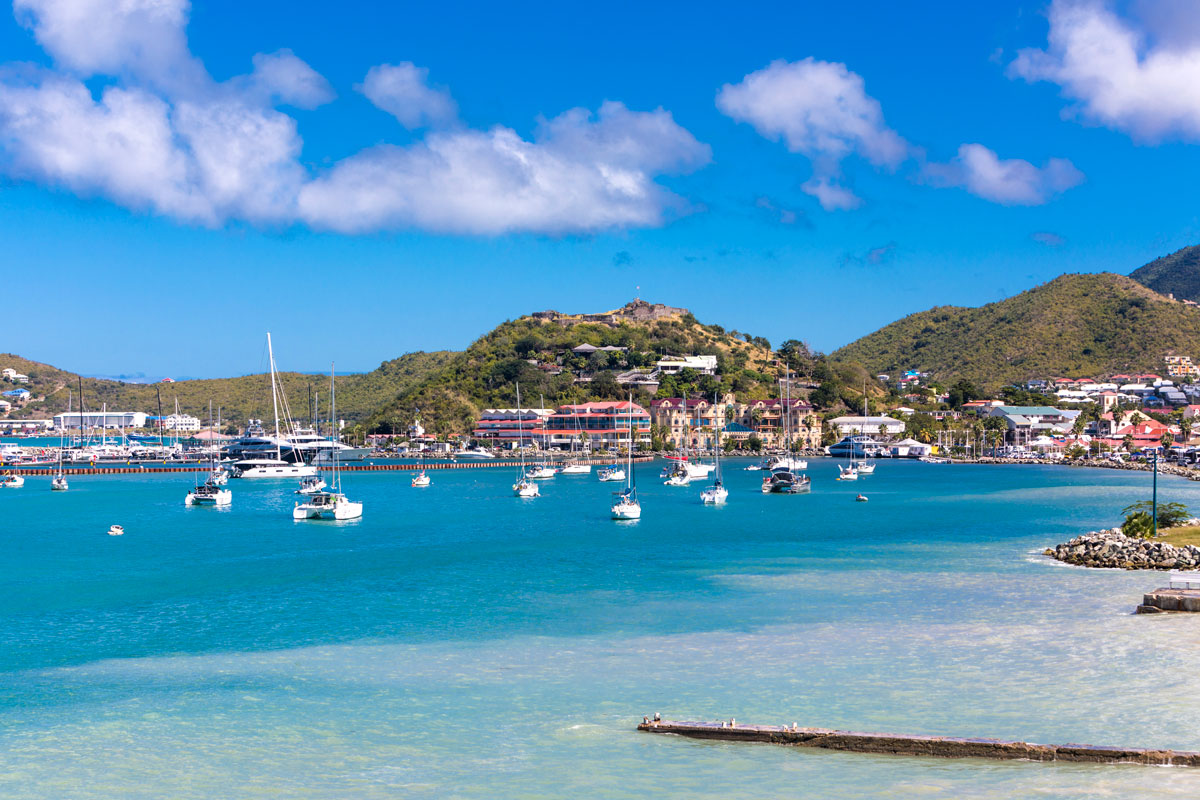
Ideal Geography
Saint-Martin is well-connected to the rest of the world, despite its remote island charm. It is a mere three-and-a-half-hour flight from the bustling metropolis of New York, making it a convenient escape for those seeking a tropical retreat. From Miami, Florida, the journey is even shorter, taking just two and a half hours by air. The island’s proximity to major cities in the Americas doesn’t end there; it is only an hour and a half away from Caracas, Venezuela, and a quick 45-minute hop from the neighboring islands of Guadeloupe and Puerto Rico. For those traveling from Europe, St. Martin is around 7,000 kilometers away, a distance that can be covered in approximately eight hours by flight, making it a feasible destination for European travelers looking for a taste of the Caribbean.
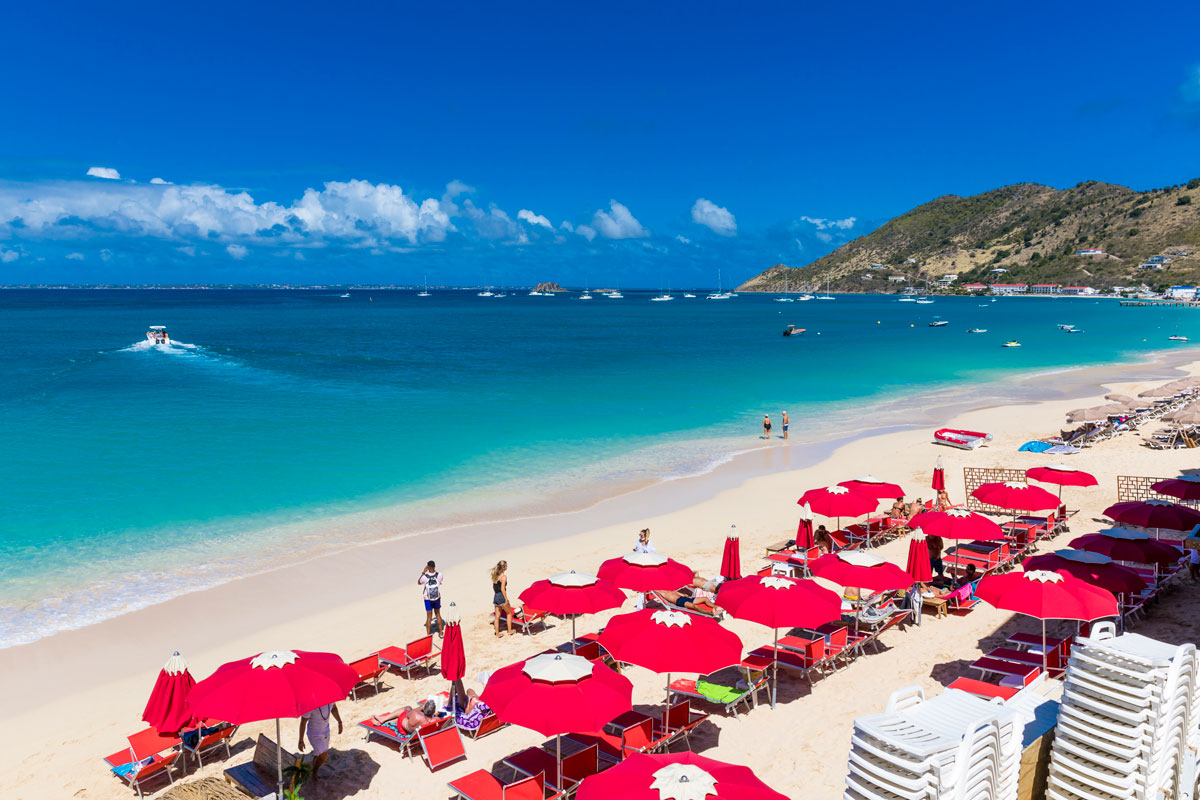
Proximity Geography
The neighboring islands further enhance St. Martin’s appeal, offering additional opportunities for exploration and adventure. To the north lies Anguilla, a British overseas territory known for its pristine beaches and luxury resorts. To the south, the chic island of St. Barts (Saint Barthélemy) beckons with its upscale ambiance and vibrant nightlife. Saba and Statia (St. Eustatius), two small Dutch islands, are located to the south and southwest, offering excellent opportunities for diving and hiking. Further south, the islands of Saint Kitts and Nevis offer a glimpse into the region’s colonial past and natural beauty.
Trekking Geography
One of the most striking features of Saint-Martin’s landscape is Pic Paradis, the highest point on the island, standing at 424 meters (1,391 feet) above sea level. Located in the center of a chain of hills, Pic Paradis offers breathtaking panoramic views of the island and the surrounding sea. The mountainous terrain is not limited to this peak; both the French and Dutch sides of the island are characterized by hilly landscapes with large mountain peaks that rise dramatically from the sea. These mountains create natural valleys where many homes are nestled, providing residents and visitors with stunning views and a sense of seclusion.
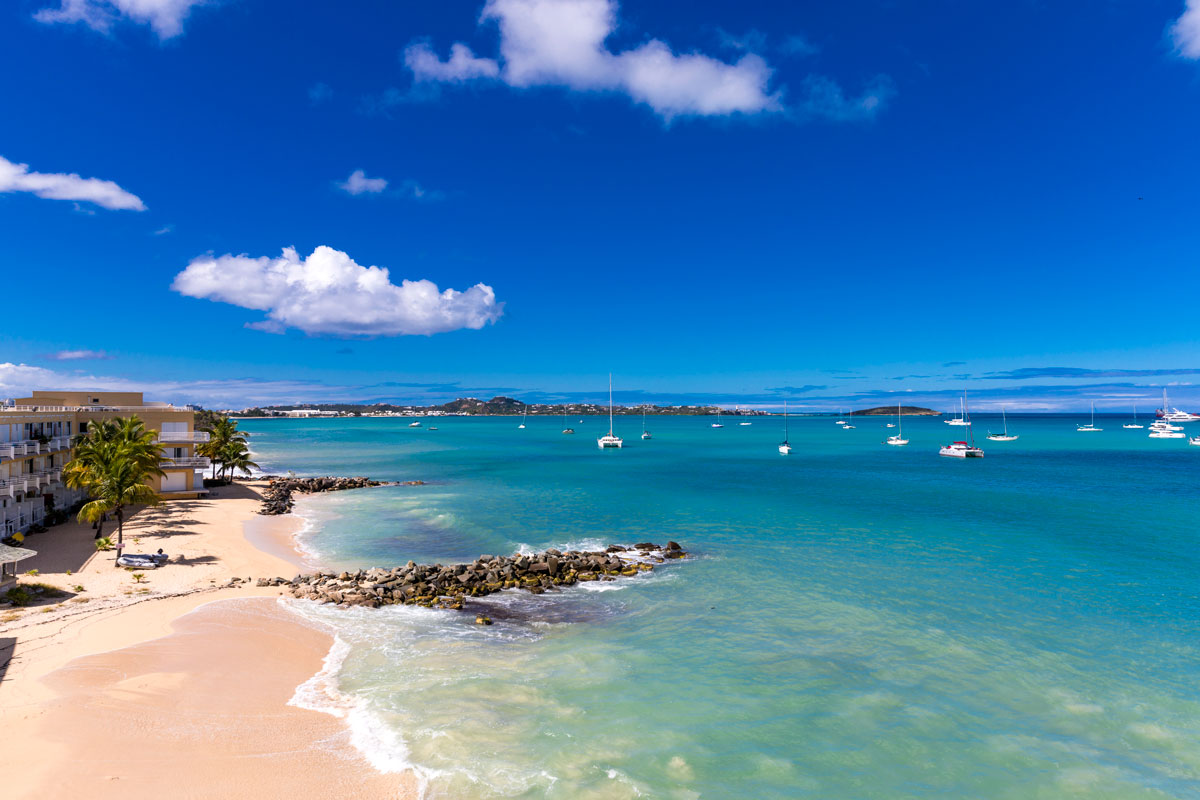
While Saint-Martin is known for its beautiful beaches, the island’s interior offers a different kind of allure. The hilly terrain is crisscrossed by numerous trails that invite hikers to explore the island’s geography from a different perspective. These trails wind through lush forests, offering glimpses of the island’s unique flora and fauna, as well as stunning views of the coastline and surrounding islands. For those who prefer to escape the sandy beaches for a day, hiking in St. Martin provides a refreshing change of pace and a deeper connection to the island’s natural beauty.
One notable aspect of St. Martin’s geography is the lack of natural freshwater sources. Unlike some other Caribbean islands, St. Martin does not have rivers or significant freshwater lakes. This has historically posed challenges for the island’s inhabitants, particularly in terms of water supply. Today, the island relies on modern infrastructure to provide fresh water to its residents and visitors, with desalination plants playing a crucial role in converting seawater into potable water. This adaptation highlights the resilience and ingenuity of the island’s people in the face of environmental challenges.
Saint-Martin’s geography has also played a significant role in shaping its cultural and economic identity. The island’s strategic location along major shipping routes in the Caribbean has made it a hub for trade and commerce over the centuries. This history is reflected in the island’s diverse population, which includes people of African, European, and Asian descent, among others. The blending of these cultures has created a unique and vibrant society that is evident in everything from the island’s cuisine to its music and festivals.
In conclusion, Saint-Martin’s geography is a defining feature of the island, influencing everything from its natural beauty to its cultural identity. The island’s location at the crossroads of the Caribbean Sea and the Atlantic Ocean, its diverse landscapes, and its proximity to major cities in the Americas and Europe make it a unique destination. Whether you’re drawn to its stunning beaches, its mountainous interior, or its rich cultural heritage, St. Martin offers something for everyone, all within a compact and easily accessible package.
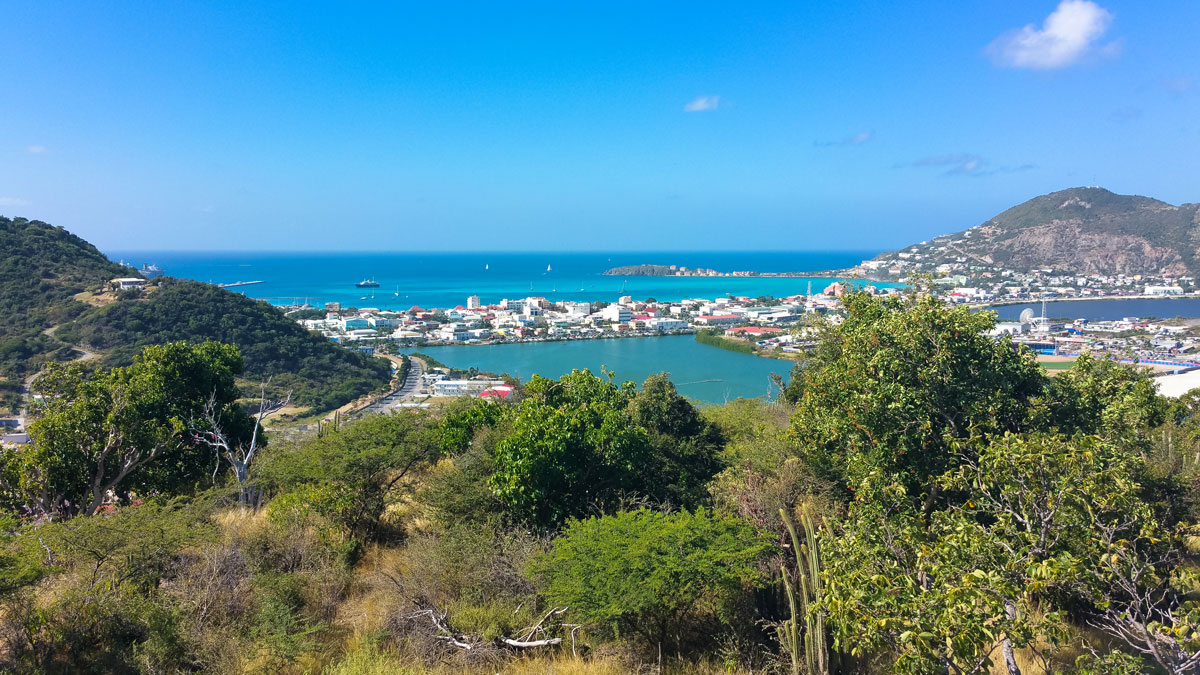
Saint-Martin’s Geography
Saint-Martin, the French half of this unique island, occupies the northern part of what is one of the most fascinating geographic and cultural regions in the Caribbean. Covering an area of approximately 54 square kilometers, Saint-Martin is a diverse and vibrant community officially known as an Overseas Collectivity of France. This status, which it has held since 2007, means that Saint-Martin is directly tied to France, both politically and administratively. Before achieving this status, Saint-Martin was managed as a commune within the larger entity of Guadeloupe. The change to a “Collectivité” granted the island greater autonomy, allowing it to manage its local affairs more independently while still under the broader governance of France.
GOOGLE MAP SHOW YOU THE WAY TO MARIGOT
The people of Saint-Martin, known as Saint-Martinois, are a resilient and diverse population. The majority of the built-up areas in Saint-Martin are situated in the low-lying coastal regions, which are naturally more accessible and offer easier access to the sea, a critical aspect of life on this island. The coastal plains, however, represent only a small portion of the island’s diverse geography. The island is also characterized by a rugged interior, dominated by hills and valleys that offer breathtaking views and house some of the more secluded residential areas.
Marigot, the capital of Saint-Martin, is the administrative and cultural heart of the French side of the island. It is here that you will find the “Collectivité Hotel,” a term that refers to the central administrative building where the island’s government operates. Marigot is also home to the Prefecture, which represents the French state on the island, and other key administrative services. Marigot is a lively town, blending the charm of traditional Caribbean architecture with modern amenities, and is known for its bustling markets, where locals and visitors alike can shop for everything from fresh produce to handmade crafts.
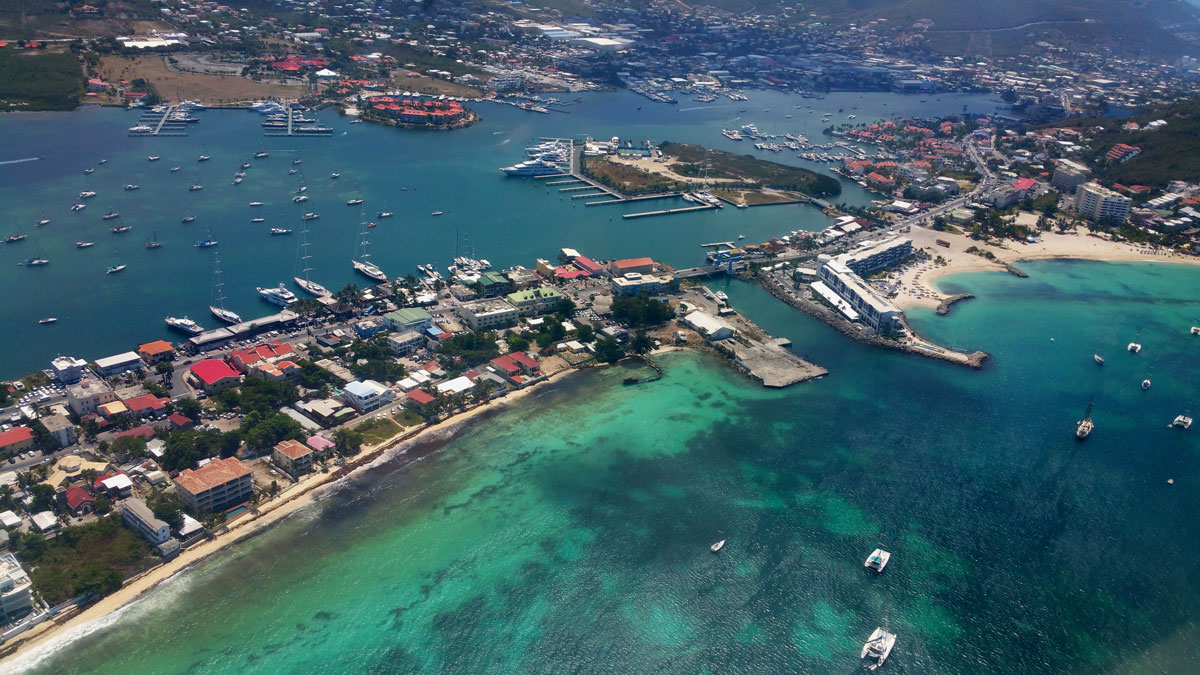
Beyond Marigot, Saint-Martin boasts several other important towns and districts, each with its unique character. Grand Case, often referred to as the “Gourmet Capital of the Caribbean,” is a must-visit for food lovers, offering an array of restaurants that serve everything from local Creole dishes to fine French cuisine. Colombier, a quieter village, offers a glimpse into the island’s past with its traditional houses and slower pace of life. Cul-de-Sac, Orleans Quarter, Nettlé Bay, and Lowlands each have their distinct vibe, from residential neighborhoods to tourist hotspots. These areas highlight the island’s ability to cater to a wide range of lifestyles, from those seeking tranquility to those looking for vibrant nightlife and beachside activities.
One of the most remarkable aspects of Saint-Martin is the seamless integration between the French and Dutch sides of the island. There is no physical border separating the two, allowing people and goods to move freely between them. This open border has fostered a unique sense of unity and cooperation between the two distinct cultures that share the island. Visitors can enjoy the best of both worlds, experiencing the French flair in Saint-Martin and the Dutch hospitality in Sint Maarten without ever having to show a passport or cross a border checkpoint.
Mountanious Geography : The highest point on the island, Pic Paradis, stands at 424 meters above sea level. This peak is located in the center of the island and is a popular destination for hikers and nature lovers. From the summit, visitors are rewarded with panoramic views of the entire island, including both the French and Dutch sides, as well as the surrounding sea and neighboring islands. The area around Pic Paradis is lush with vegetation and is home to several hiking trails that allow visitors to explore the island’s natural beauty away from the bustling beaches.
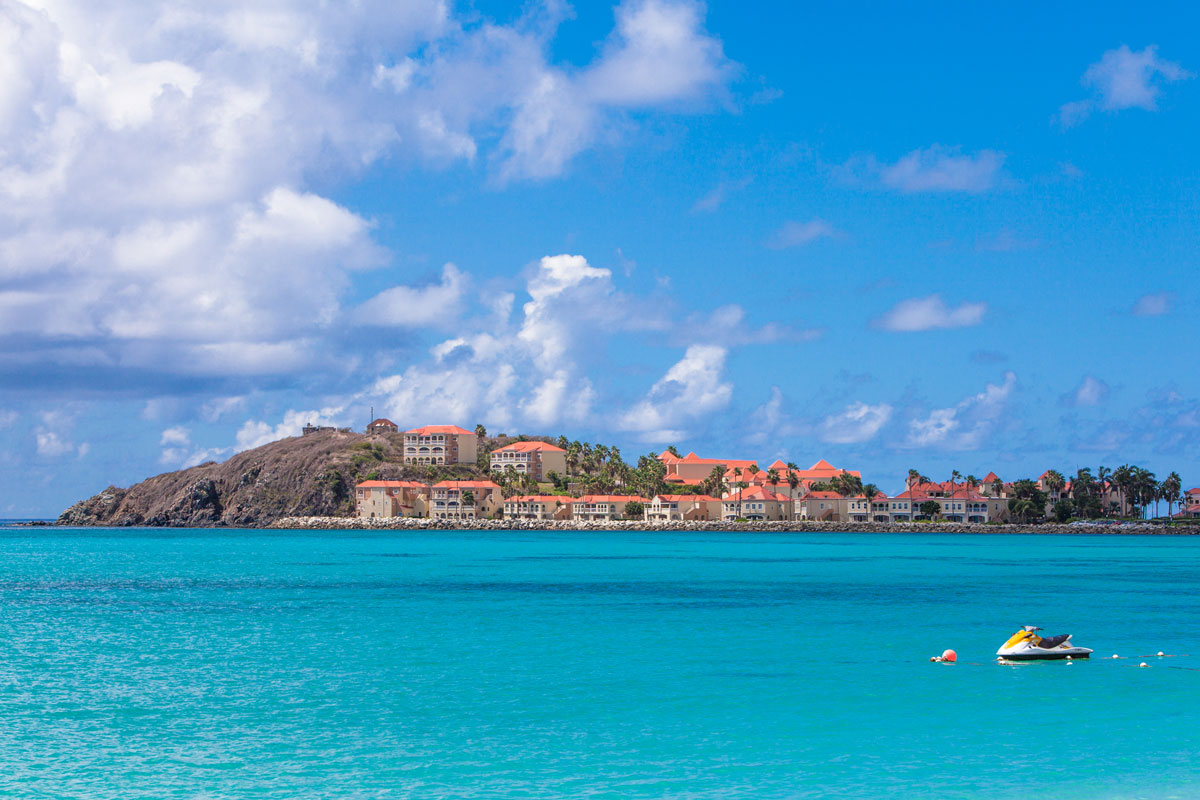
Sint Maarten’s Geography
Covering the southern part of the island, Sint Maarten is the Dutch counterpart to Saint-Martin’s geography, occupying an area of about 34 square kilometers. Despite its smaller size, Sint Maarten is a vibrant and economically significant part of the island. The inhabitants, known as Sint Maartiners, share a similar coastal settlement pattern with their French neighbors, with most of the population living in low-lying areas along the coast. However, as the population grows and development continues, these settlements are gradually expanding into the island’s mountainous regions, creating new residential areas and offering spectacular views of the surrounding landscape.
GOOGLE MAP SHOW YOU THE WAY TO PHILIPSBURG
Sint Maarten has a rich history as part of the Dutch West Indies, a group of five islands that also included Bonaire, Curacao, Saba, and Statia (St. Eustatius). This historical connection to the Netherlands has deeply influenced the geography, the culture, architecture, and governance of Sint Maarten. The island was part of this larger entity until October 10, 2010, when it achieved a new status as a country within the Kingdom of the Netherlands. This change granted Sint Maarten greater autonomy, allowing it to manage most of its internal affairs while the Dutch government remained responsible for defense and international policy. The dissolution of the Dutch West Indies marked the beginning of a new chapter for Sint Maarten, as it embraced its status as an independent country within the Kingdom.
Institutional Geography
Philipsburg, the capital of Sint Maarten, is the political and commercial hub of the Dutch side. Located on a narrow stretch of land between Great Bay and the Great Salt Pond, Philipsburg is a bustling town known for its duty-free shopping, historic sites, and vibrant boardwalk. The town is home to the island’s Parliament and most of its key government buildings, making it the center of political activity. Philipsburg’s colonial architecture, with its colorful buildings and historic landmarks, provides a charming backdrop to the town’s lively streets and bustling markets.
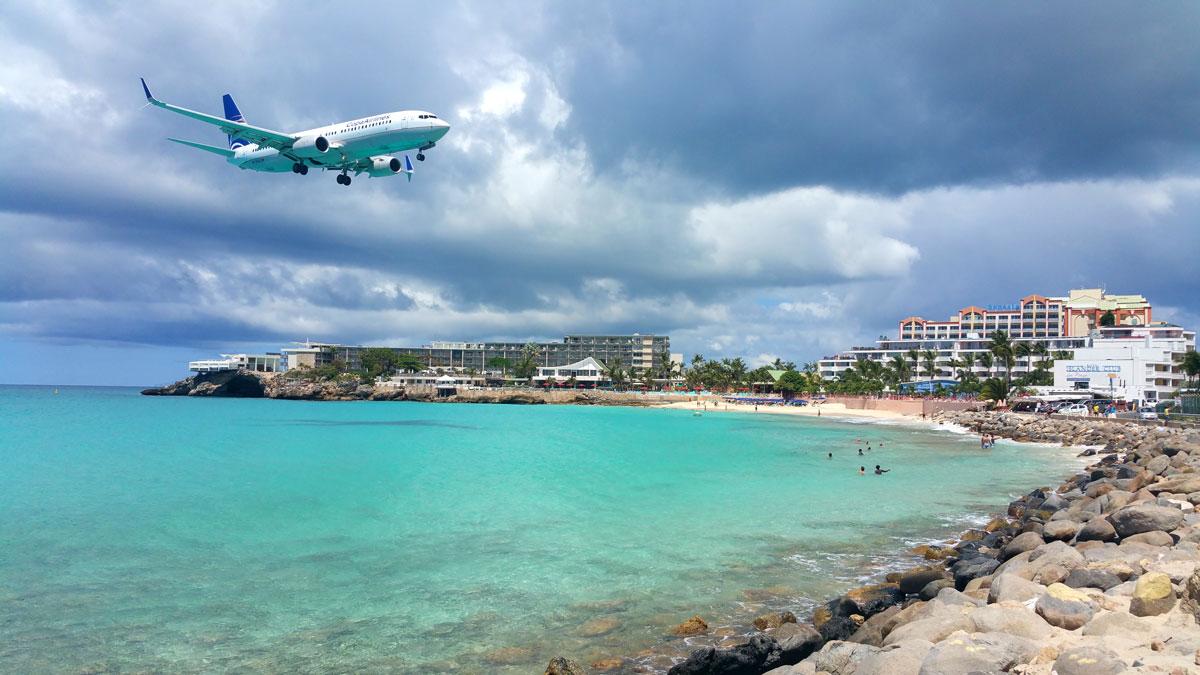
Beyond Philipsburg, Sint Maarten Geography is home to several other important towns and districts. Simpson Bay, located near the airport, is a popular area known for its nightlife, restaurants, and marinas. Madame Estate and Cul de Sac are primarily residential areas, while Dutch Quarter, Cole Bay, and South Reward offer a mix of residential and commercial spaces. Oyster Pond, located on the border with the French side, is a scenic area known for its marina and luxury resorts. St. Peters, Pointe Blanche, Middle Region, Cay Hill, Upper Prince’s Quarter, and Lower Prince’s Quarter each contribute to the island’s diverse landscape, offering everything from quiet suburban living to bustling urban centers.
The geography of Sint Maarten, like that of Saint-Martin, is characterized by a mix of coastal plains and rugged hills. The island’s mountainous interior is gradually being developed, as new roads and infrastructure open up previously inaccessible areas. This expansion into the hills provides new opportunities for development, but also presents challenges, such as the need for sustainable development practices that preserve the island’s natural beauty.
In conclusion, the island of Saint-Martin/Sint Maarten is a unique blend of French and Dutch influences, each with its distinct geography, culture, and history. The seamless integration of the two sides, combined with the island’s diverse landscapes and vibrant communities, makes it one of the most fascinating destinations in the Caribbean. Whether exploring the bustling streets of Marigot and Philipsburg or hiking the trails of Pic Paradis, visitors to this island will find a rich tapestry of experiences that reflect the island’s complex and captivating geography.
